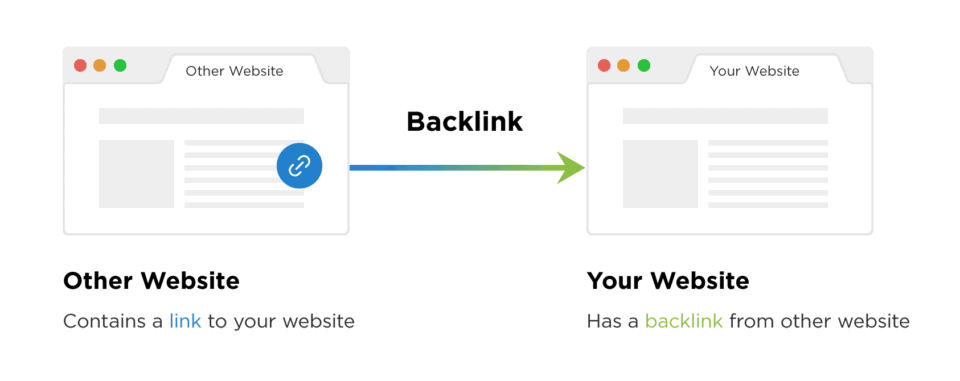Backlinks are a fundamental aspect of search engine optimization (SEO), playing a critical role in determining a website’s ranking on search engine results pages (SERPs). The importance of backlinks cannot be overstated as they serve as “votes of confidence” for a webpage, signaling to search engines that the content is valuable and authoritative. However, not all backlinks are created equal, and understanding the different types of backlinks is crucial for building an effective SEO strategy. In this comprehensive guide, we’ll explore the various types of backlinks, their significance, and best practices for acquiring them to boost your site’s authority and rankings.
What Are Backlinks?
Backlinks, also known as inbound or incoming links, are links from one website to another. When a webpage links to your site, it’s considered a backlink for your page. Backlinks are vital for SEO because they act as endorsements from other websites, signaling to search engines that your content is relevant and valuable. The more high-quality backlinks a webpage has, the better its chances of ranking higher in search results.
Why Backlinks Matter for SEO
Search engines, especially Google, use backlinks as part of their algorithm to determine the credibility and relevance of a website. High-quality backlinks from authoritative and trustworthy sites can boost your site’s ranking, while low-quality or spammy backlinks can harm it. Backlinks contribute to SEO in several ways:
- Authority Building: Backlinks from authoritative sites signal trustworthiness and credibility to search engines.
- Organic Traffic: Links from popular websites can drive traffic to your site, increasing visibility.
- Crawling and Indexing: Search engine bots use backlinks to discover and index new content across the web.
The Different Types of Backlinks
Understanding the types of backlinks and their effects on your website’s SEO is key to formulating an effective link-building strategy. Here are the most common types of backlinks:
1. DoFollow Backlinks
DoFollow backlinks are the most valuable type of backlinks for SEO purposes. When a website links to another using a DoFollow tag, it passes “link juice” or authority to the linked site. Search engines consider these links as votes of confidence, contributing positively to your domain authority (DA) and improving your chances of ranking higher.
Example: If a high-authority website like Forbes links to your blog, that link will boost your site’s authority and improve your search engine rankings.
How to Earn DoFollow Backlinks:
- Create high-quality, shareable content.
- Guest post on reputable websites.
- Build relationships with influencers or industry leaders.
- Reach out to websites with broken links and suggest your content as a replacement.
2. NoFollow Backlinks
NoFollow backlinks, on the other hand, do not pass link juice to the linked website. These links include a NoFollow tag, instructing search engines not to consider the link for ranking purposes. However, NoFollow links can still be valuable as they can drive traffic and provide brand exposure.
Example: Links from comments sections or forum discussions often use NoFollow tags to prevent spam but can still generate traffic to your site.
Best Practices for NoFollow Backlinks:
- Aim to have a natural mix of DoFollow and NoFollow backlinks.
- Use NoFollow links for affiliate links or paid partnerships.
- Comment on relevant blogs and forums where you can add value to the discussion, even if the links are NoFollow.
3. Editorial Backlinks
Editorial backlinks are earned when a website links to your content naturally, without you requesting it. These links are typically given when your content is considered valuable, authoritative, or worth referencing. Editorial backlinks are often the most powerful because they are genuine endorsements of your content.
Example: If a news outlet references your blog post in one of their articles, you receive an editorial backlink, which can significantly boost your credibility.
How to Earn Editorial Backlinks:
- Create original research, infographics, or case studies.
- Publish thought leadership content that adds value to your industry.
- Stay active in industry communities and share insights that encourage others to reference your work.
4. Guest Post Backlinks
Guest post backlinks are acquired when you write a guest article for another website, often with a link back to your site. These backlinks are beneficial because they allow you to control the anchor text and the link placement, which can influence how search engines interpret the relevance of the link to your content.
Example: Writing a guest post for a tech blog and including a link to your software-related content is a great way to drive targeted traffic.
Best Practices for Guest Post Backlinks:
- Only guest post on high-authority, relevant websites.
- Ensure the content you provide is valuable and not overly promotional.
- Use natural, relevant anchor text when linking back to your site.
5. Profile Backlinks
Profile backlinks are links created when you register for a user profile on various websites or platforms. This can include social media profiles, online directories, or forum signatures where you can include a link to your site. While profile backlinks may not carry as much weight as other types, they still contribute to a diverse backlink profile.
Example: Creating a LinkedIn profile with a link back to your website is a simple way to gain a profile backlink.
How to Use Profile Backlinks:
- Make sure the platforms are reputable and relevant to your industry.
- Avoid spammy profile links that are created solely for SEO purposes.
- Use this strategy as part of a broader link-building effort, not the sole focus.
6. Comment Backlinks
Comment backlinks are links placed in the comments section of a blog post or forum. While these links are often NoFollow, they can still drive traffic and build relationships if used appropriately. However, excessive or spammy comment backlinking can harm your SEO efforts, so use this strategy with caution.
Example: Leaving insightful comments on a high-traffic blog with a link back to a relevant article on your site can generate referral traffic.
Best Practices for Comment Backlinks:
- Add genuine, thoughtful comments that contribute to the conversation.
- Avoid commenting solely for the purpose of dropping a link.
- Ensure your comments are on high-quality, relevant blogs.
7. Directory Backlinks
Directory backlinks come from online business directories, where your site is listed along with your contact information and a link to your website. These links are generally easy to obtain and can help increase visibility, especially for local SEO.
Example: Listing your business on directories like Yelp or Google My Business can create backlinks and improve your local search rankings.
How to Get Directory Backlinks:
- Submit your site to reputable, industry-specific directories.
- Ensure all your business information is accurate and up to date.
- Avoid low-quality or spammy directories.
The Importance of Diversifying Your Backlink Profile
A diverse backlink profile is essential for long-term SEO success. Search engines prioritize websites with natural and varied backlink profiles, meaning your site should acquire links from multiple sources and in various forms. Relying solely on one type of backlink, such as guest posts or directory listings, can make your site appear manipulative and may lead to penalties from search engines.
Common Backlink Misconceptions
- More Backlinks Always Mean Better Rankings: While backlinks are crucial for SEO, quality trumps quantity. A few high-quality backlinks from authoritative websites can be far more beneficial than numerous low-quality links.
- NoFollow Links Are Useless: While NoFollow links don’t pass link juice, they can still drive traffic and provide brand exposure, which are valuable for SEO in the long run.
- Anchor Text Doesn’t Matter: Anchor text, or the clickable text in a hyperlink, plays a significant role in how search engines interpret the relevance of the link. It’s essential to use natural, relevant anchor text to avoid penalties.
Conclusion
Backlinks remain a cornerstone of effective SEO strategies, but not all backlinks are created equal. By understanding the different types of backlinks, including DoFollow, NoFollow, editorial, guest post, profile, and comment backlinks, you can build a diverse and powerful backlink profile that improves your site’s search engine rankings. Prioritizing high-quality, relevant backlinks while avoiding spammy or manipulative tactics will not only boost your SEO efforts but also establish your website as a trusted and authoritative source in your industry.
By using a well-rounded approach to link building and focusing on quality over quantity, you’ll ensure long-term success in your SEO strategy.









